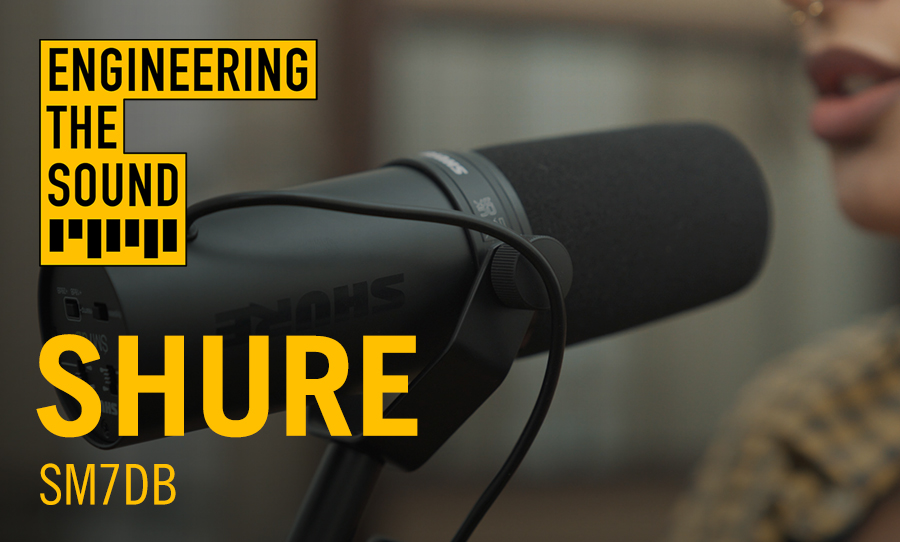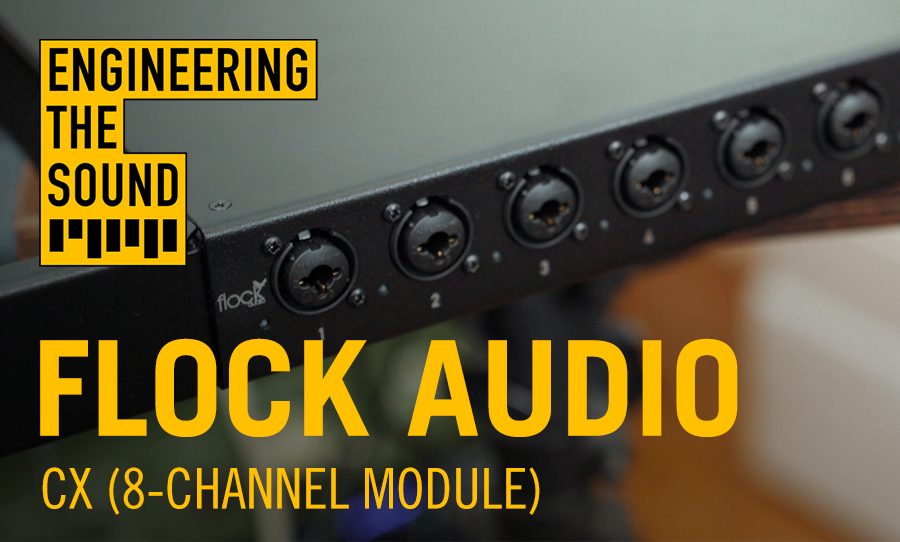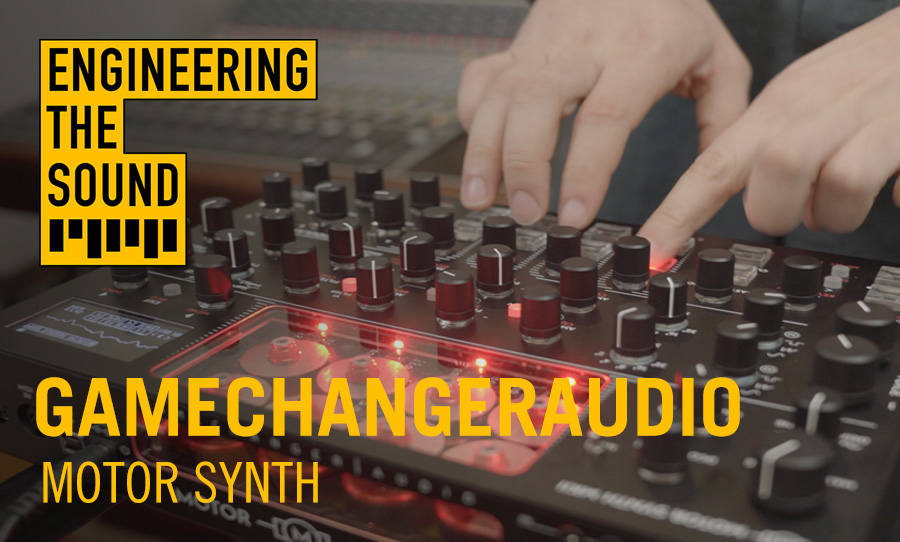If you’ve ever had the pleasure of working with an SM7B you’ll know exactly why this is a huge deal.
In case you missed it, this year is the 50th anniversary of the classic Shure SM7, the predecessor to the modern staple, the SM7B. To celebrate, Shure has given us a brand new updated model. This is the SM7dB.
If I were to put a blindfold on and walk in a straight line here in Studio A there’s a decent chance I’d trip on an SM7B and that’s probably the case in almost every music studio and podcasting setup around the world.

It’s arguably the most famous microphone in the world. And now, with so many industries leaning further into podcasting and content creation, the SM7B is only becoming more and more common as the mic of choice.
So I suppose the main question we all have about the SM7dB is ‘if it ain’t broke don’t fix it’ right? Well here’s the thing, they haven’t ‘fixed’ it, this has the same cartridge, shock mount and internals as the standard SM7B.
So what’s new? The SM7dB has an all new Shure-designed built-in preamp with technology licensed from Cloud, offering up to 28dB of adjustable gain.
The preamp has been tuned by Shure’s expert engineers specifically for the SM7dB to ensure the iconic SM7 sound is able to live on inside the mic; unchanged and unaltered.
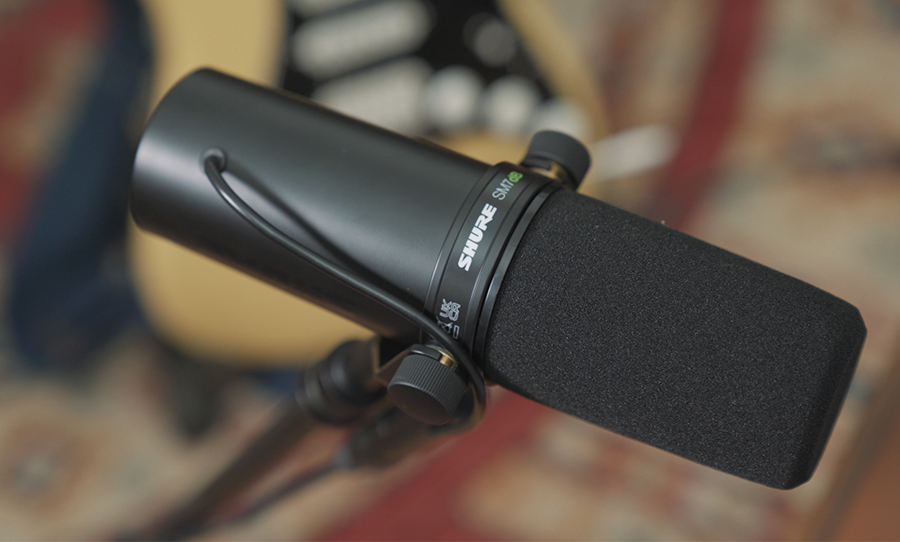
So the big deal is that now with one of these gain boosters inbuilt, which can provide either an extra 18dB or 28dB of boost when provided with phantom power, artists don’t have to buy an extra inline preamp, which means less pesky cables in the studio.
If you’ve ever had the pleasure of working with an SM7B you’ll know exactly why this is a huge deal. Often times – and particularly for voiceover applications – the SM7B needs a lot of gain to get it up and running at a comfortable recording level.
The issue is when working with affordable audio interfaces, as many people in home studios and podcast rigs are, the cheaper preamps tend to get a bit noisy when you push them.
This isn’t a huge issue when using the SM7B to record loud sources like snare drums and guitar amps. But for vocals and dialogue the added noise floor isn’t a whole lot of fun for listeners.

So let’s check this mic out in action, I’ve got Awa here, a Sydney songwriter who’s gonna be sharing a little of her music with us so we can have a listen to it. What you’re about to hear is some guitar and some vocals, both recorded using the SM7dB.
I dunno about you guys but as far as sound goes, This is an SM7B that does SM7B things. It gives your guitars a little more weight and warmth than micing with a standard SM57 and on vocals it gives you that lovely front of the mix sound with lots of room rejection like we’ve come to expect. No real surprises here.
I’m a big fan of the fresh new back panel which has seen some subtle improvements. Of course you have your switches to enable and choose the amount of gain boost you’d like, but they’re also rehashed the design for the bass roll-off and presence boost switches.
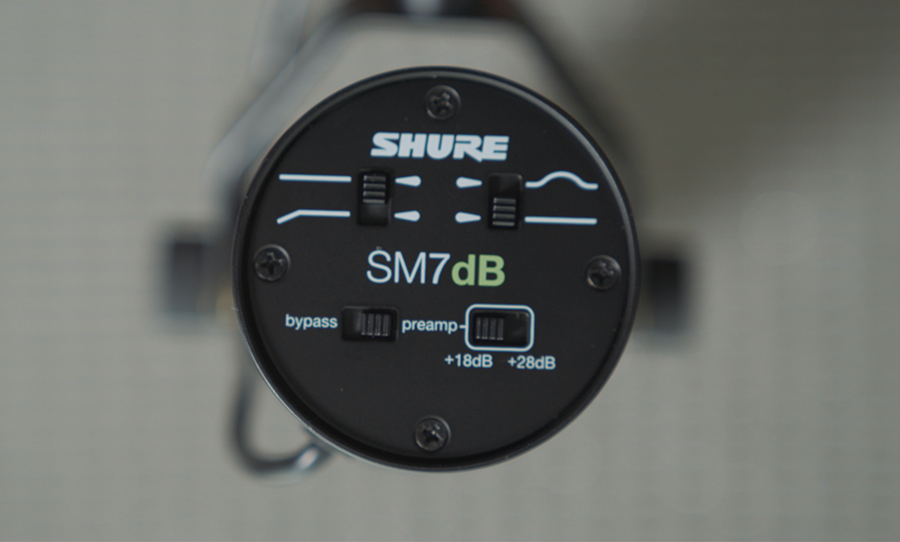
It’s a nice touch because I never found myself reaching for the switches on the back of the original SM7B. Probably because they were sunk a little too far into the casing and maybe because the frequency line design never quite clicked for me.
Regardless, having them so easily accessible on this model will definitely encourage some more tonal shaping right at the source.
It’s always worth considering adding an SM7B, or a second, or a third, to your mic locker because they just work, and they just work on everything.
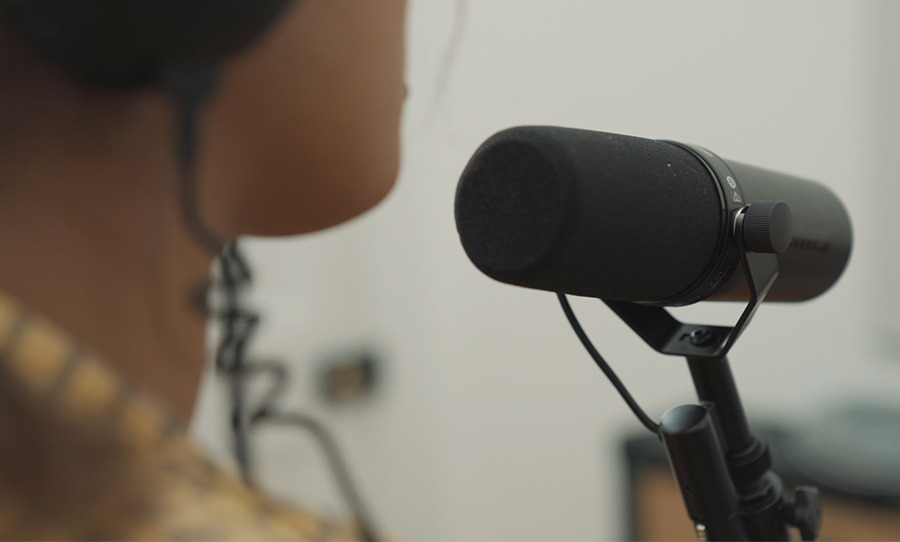
And while the base model will still be kicking around, for the extra dollars I would definitely recommend picking up the SM7dB for the inline gain boost, especially if you’re looking into it for vocals or for dialogue.
The SM7dB is set to release at 1,099 Aussie Dollars and you should see them on shelves in your local authorised Shure Retailer shortly.
Find out more at Shure.
